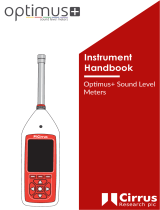
32
Safety instructions
This device is designed and tested in accordance with the safety regulations
for electronic measuring instruments. The proper functioning and operational
safety of the device can only be guaranteed if the generally applicable safety
measures and the device-specic safety instructions given in this manual are
respected during operation.
Intended use
This device is only intended to be used for sound pressure metering. Use the
device only as described in this user manual. Any other use or use under other
operating conditions is considered to be improper and may result in personal
injury or property damage. No liability will be assumed for damages resulting
from improper use.
This device is not suitable for safety applications, emergency shut-down devic-
es or applications where malfunction may result in personal injury or material
damage. Not following this instruction may result in serious injury and material
damage.
This device may be used only by persons with sucient physical, sensorial, and
intellectual abilities and having corresponding knowledge and experience.
Other persons may use this device only if they are supervised or instructed by a
person who is responsible for their safety.
Danger for children
Ensure that plastic bags, packaging, etc. are disposed of properly
and are not within reach of babies and young children. Choking
hazard!
Ensure that children do not detach any small parts (e.g. knobs or the like) from
the unit. They could swallow the pieces and choke! Never let children unat-
tended use electrical devices.
Possible hearing damage
When measuring high volume and over a long period may lead
to permanent hearing damage. Always wear adequate hearing
protection for the specic situation.
Operating conditions
This device has been designed for indoor use only. To prevent dam-
age, never expose the device to any liquid or moisture. Avoid direct
sunlight, heavy dirt, and strong vibrations.
Proper functioning and operational safety of the device can only be
achieved under the climatic conditions that are specied in the chapter „Techni-
cal Specications“.













